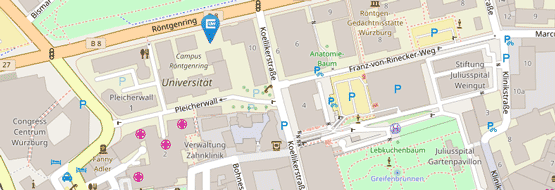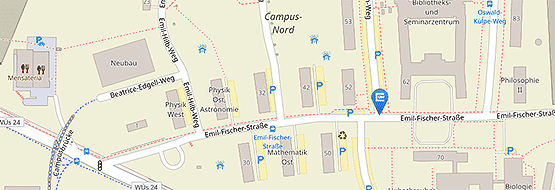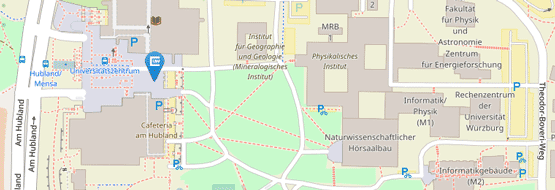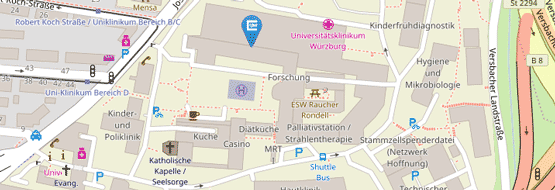Book Chapters
- [ 2018 ]
- [ 2017 ]
- [ 2016 ]
- [ 2015 ]
- [ 2014 ]
- [ 2013 ]
- [ 2011 ]
- [ 2009 ]
- [ 2008 ]
- [ 2006 ]
- [ 2005 ]
- [ 2004 ]
2018[ to top ]
-
Context Monitoring for Improved System Performance and QoE. . In Autonomous Control for a Reliable Internet of Services: Methods, Models, Approaches, Techniques, Algorithms, and Tools, I. Ganchev, R. D. van der Mei, H. van den Berg (eds.). Springer International Publishing, 2018.
-
QoE Management for Future Networks. . In Autonomous Control for a Reliable Internet of Services: Methods, Models, Approaches, Techniques, Algorithms and Tools. Springer, 2018.
-
The Value of Context-Awareness in Bandwidth-Challenging HTTP Adaptive Streaming Scenarios. . In Autonomous Control for a Reliable Internet of Services: Methods, Models, Approaches, Techniques, Algorithms, and Tools, I. Ganchev, R. D. van der Mei, H. van den Berg (eds.). Springer International Publishing, 2018.
-
State of the Art and Research Challenges in the Area of Autonomous Control for a Reliable Internet of Services. . In Autonomous Control for a Reliable Internet of Services. Springer, 2018.
-
Big-Data Helps SDN to Improve Application Specific Quality of Service. . In Big Data and Software Defined Networks. Institution of Engineering and Technology (IET), 2018.
2017[ to top ]
-
Crowdsourcing Quality of Experience Experiments. . In Evaluation in the Crowd. Crowdsourcing and Human-Centered Experiments, A. D., P. H., H. T. (eds.). Springer, 2017.
-
Crowdsourcing Technology to Support Academic Research. . In Evaluation in the Crowd. Crowdsourcing and Human-Centered Experiments, A. D., P. H., H. T. (eds.). Springer, 2017.
-
Understanding The Crowd: Ethical and Practical Matters in the Academic Use of Crowdsourcing. . In Evaluation in the Crowd: Crowdsourcing and Human-Centred Experiments, D. Archambault, T. Hoßfeld, H. C. Purchase (eds.). Springer, 2017.
-
Evaluation in the Crowd: An Introduction. . In Evaluation in the Crowd. Crowdsourcing and Human-Centered Experiments. Springer, Cham, 2017.
2016[ to top ]
-
Matching Requirements for Ambient Assisted Living and Enhanced Living Environments with Networking Technologies. . In Ambient Assisted Living and Enhanced Living Environments, C. Dobre, C. X. Mavromoustakis, N. M. Garcia, R. I. Goleva, G. Mastorakis (eds.). Elsevier, 2016.
2015[ to top ]
-
Green Wireless Energy Efficiency in Wireless Networks. . In Large-scale Distributed Systems and Energy Efficiency: A Holistic View, J.-M. Pierson (ed.). John Wiley & Sons, Ltd, 2015.
-
SDN-Enabled Energy-Efficient Network Management. . In Green Communications: Principles, Concepts and Practice, K. Samdanis, P. Rost, A. Maeder, M. Meo, C. Verikoukis (eds.). John Wiley & Sons, Ltd, 2015.
2014[ to top ]
-
Socially-Aware Traffic Management. . In Socioinformatics - The Social Impact of Interactions between Humans and IT, K. Zweig, W. Neuser, V. Pipek, M. Rohde, I. Scholtes (eds.). Springer International Publishing, 2014.
-
Social Network Analysis in the Enterprise: Challenges and Opportunities. . In Socioinformatics - The Social Impact of Interactions between Humans and IT, K. Zweig, W. Neuser, V. Pipek, M. Rohde, I. Scholtes (eds.). Springer International Publishing, 2014.
-
Web Browsing. . In Quality of Experience: Advanced Concepts, Applications and Methods, S. R. Sebastian Möller (ed.). Springer: T-Labs Series in Telecommunication Services, ISBN 978-3-319-02680-0, 2014.
-
Crowdsourcing in QoE Evaluation. . In Quality of Experience: Advanced Concepts, Applications and Methods, A. R. Sebastian Möller (ed.). Springer: T-Labs Series in Telecommunication Services, ISBN 978-3-319-02680-0, 2014.
2013[ to top ]
-
From Packets to People: Quality of Experience as New Measurement Challenge. . In Data Traffic Monitoring and Analysis: From measurement, classification and anomaly detection to Quality of experience, C. C. {Ernst Biersack (ed.). Springer’s Computer Communications and Networks series, Volume 7754, 2013.
-
Towards a Socially-Aware Management of New Overlay Application Traffic Combined with Energy Efficiency in the Internet (SmartenIT). . In The Future Internet, A. G. Alex Galis (ed.). Springer, LNCS 7858, 2013.
-
Internet Video Delivery in YouTube: From Traffic Measurements to Quality of Experience. . In Data Traffic Monitoring and Analysis: From measurement, classification and anomaly detection to Quality of experience, C. C. {Ernst Biersack (ed.). Springer’s Computer Communications and Networks series, Volume 7754, 2013.
2011[ to top ]
-
Focus Group Green Wireless - Energy-Efficient Wireless Network Planning. . In COST Action IC0804 on Energy Efficiency in Large Scale Distributed Systems, 2nd Year Proceedings, J.-M. Pierson, H. Hlavacs (eds.), pp. 106–109. COST Office, 2011.
-
Multipath Routing Slice Experiments in Federated Testbeds. . In Future Internet Assembly (FIA) Book Future Internet: Achievements and Promising Technology, J. Domingue, A. Galis, A. Gavras, T. Zahariadis, D. Lambert, F. Cleary, P. Daras, S. Krco, H. Müller, M.-S. Li (eds.). Springer, 2011.
-
Aktuelle Entwicklungen im Internet und sich daraus ergebende rechtliche Fragestellungen. . In Internet-Kriminalität und die neuen Herausforderungen der Informationsgesellschaft des 21. Jahrhundert, E. H. {Jiri Herczeg (ed.). Wolters Kluwer CR, ISBN 978-80-7357-601-1, 2011.
-
Assessment of Economic Traffic Management of Overlay Traffic: Methodology and Results. . In Future Internet Assembly (FIA) Book: Future Internet Achievements and Promising Technology, J. D. et al. (ed.). Springer LNCS, 2011.
2009[ to top ]
-
An Economic Traffic Management Approach to Enable the TripleWin for Users, ISPs, and Overlay Providers. . In FIA Prague Book, ISBN 978-1-60750-007-0, G. Tselentis, J. Domingue, A. Galis, A. Gavras, D. Hausheer, S. Krco, V. Lotz, T. Zahariadis (eds.). IOS Press Books Online, 2009.
-
Chapter XVI: Mobile P2P in Cellular Mobile Networks: Architecture and Performance. . In Mobile Peer-to-Peer Computing for Next Generation Distributed Environments: Advancing Conceptual and Algorithmic Applications, B.-C. Seet (ed.). Information Science Reference, ISBN: 978-1-60566-715-7, 2009.
-
Chapter VIII: Cooperation Strategies for P2P Content Distribution in Cellular Mobile Networks: Considering Mobility and Heterogeneity. . In Mobile Peer-to-Peer Computing for Next Generation Distributed Environments: Advancing Conceptual and Algorithmic Applications, B.-C. Seet (ed.), pp. 1234–5678. Information Science Reference, ISBN: 978-1-60566-715-7, 2009.
-
Chapter VII: Cooperation Strategies for P2P Content Distribution in Cellular Mobile Networks: Considering Selfishness and Heterogeneity. . In Mobile Peer-to-Peer Computing for Next Generation Distributed Environments: Advancing Conceptual and Algorithmic Applications, B.-C. Seet (ed.). Information Science Reference, ISBN: 978-1-60566-715-7, 2009.
-
Speech Quality Aware Resource Control for Fixed and Mobile WiMAX. . In WiMAX Evolution, F. F. Marcos Katz (ed.). John Wiley & Sons, 2009.
2008[ to top ]
-
Radio Resource Management Strategies for HSDPA-enhanced UMTS Networks. . In Wireless Multimedia: Quality of Service and Solutions, L. M. Nikki Cranley (ed.). IGI Global, 2008.
2006[ to top ]
-
Warum Panini Fußballalben auch Informatikern Spaß machen. . In Fußball eine Wissenschaft für sich, P. D. H.-G. Weigand (ed.). Verlag Königshausen & Neumann, 2006.
2005[ to top ]
-
Peer-to-Peer Services. . In COST-279 Final Report - Analysis and Design of Advanced Multiservice Networks Supporting Mobility, Multimedia, and Internetworking, J. Brazio, P. Tran-Gia, N. Akar, A. Beben, W. Burakowski, M. Fiedler, E. Karasan, M. Menth, P. Olivier, K. Tutschku, S. Wittevrongel (eds.). Springer, 2005.
-
Traffic Characteristics and Performance Evaluation of Peer-to-Peer Systems. . In Peer-to-Peer-Systems and Applications, K. W. Ralf Steinmetz (ed.). Springer, 2005.
2004[ to top ]
-
Chapter 6: Peer-To-Peer Programmability. . In Programmable Networks for IP Service Deployment, A. Galis, S. Denazis, C. Brou, C. Klein (eds.). Artech House Books, Norwood, MA, 2004.






